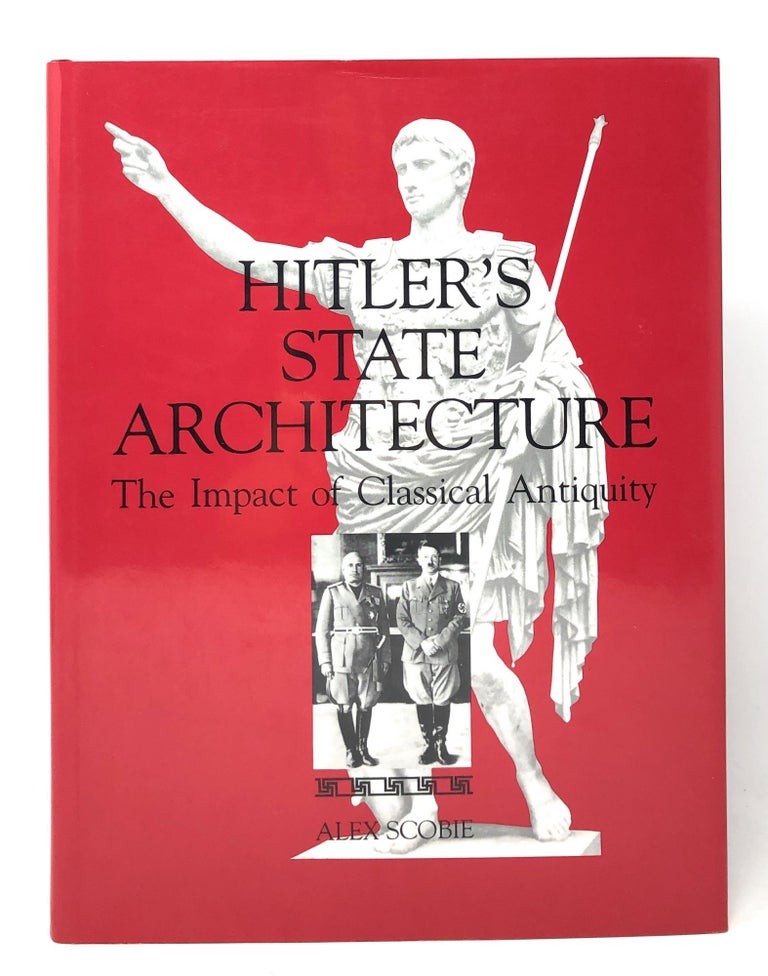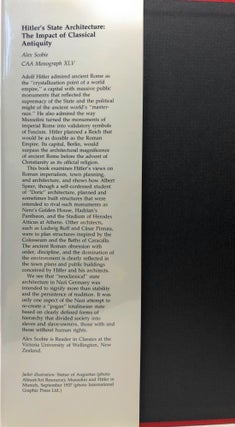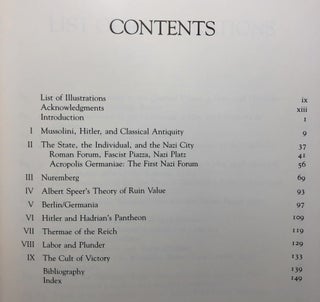Hitler's State Architecture: The Impact of Classical Antiquity
University Park: Published for College Art Association by The Pennsylvania State University Press, 1990.
First Edition. Hardcover. 11 1/4" X 8 3/4". 152pp. Mild coverwear to dust jacket featuring Statue of Augustus and a photograph of Mussolini and Hitler in Munich, September 1937, with gentle bumping to tail of spine. Bound in red cloth over boards, with upper board and spine lettered in gilt. Pages slightly musty. Inked inscription to verso of half-title page and small pencilled note to last page of index, else unmarked. Binding is firm, tight, and sound. Monographs on the Fine Arts sponsored by College Art Association, Volume XLV.
ABOUT THIS BOOK:
Adolf Hitler admired ancient Rome as the "crystallization point of a world empire," a capital with massive public monuments that reflected the supremacy of the State and the political might of the ancient world's "master-race." He also admired the way Mussolini turned the monuments of imperial Rome into validatory symbols of Fascism. Hitler planned a Reich that would be a as durable as the Roman Empire. Its capital, Berlin, would surpass the architectural magnificence of ancient Rome before the advent of Christianity as its official religion.
This book examines Hitler's views on Roman imperialism, town planning, and architecture, and shows how Albert Speer, though a self-confessed student of "Doric" architecture, planned and sometimes built structures that were intended to rival such monuments as Nero's Golden House, Hadrian's Pantheon, and the Stadium of Herodes Atticus at Athens. Other architects, such as Ludwig Ruff and Cäsar Pinnau, were to plan structures inspired by the Colosseum and the Baths of Caracalla. The ancient Roman obsession with order, discipline, and the domination of the environment is clearly reflected in the town plans and public buildings conceived by Hitler and his architects.
We see that "neoclassical" state architecture in Nazi Germany was intended to signify more than stability and the persistence of tradition. It was only one aspect of the Nazi attempt to re-create a "pagan" totalitarian state based on clearly defined forms of hierarchy that divided society into slaves and slave-owners, those with and those without human rights. (publisher)
This book is oversize and will require substantial additional postage to ship internationally. Please contact us today for an international shipping quote! Very good / very good. Item #7923
ISBN: 0271006919
Price: $150.00




